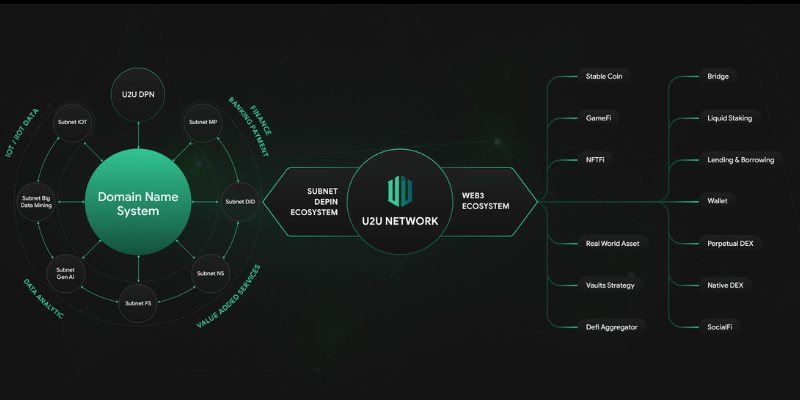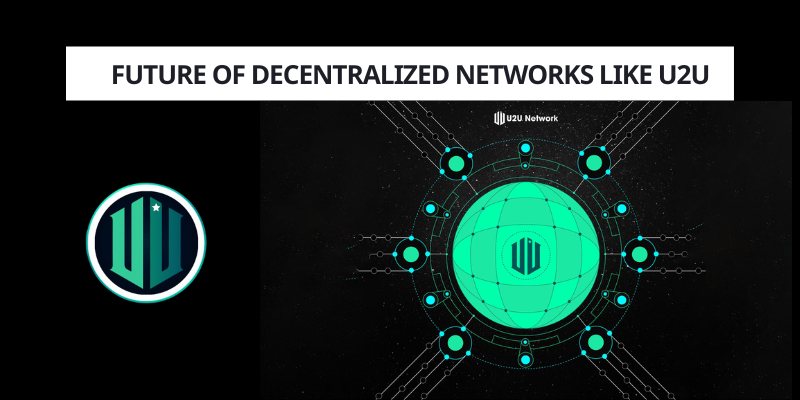As the digital landscape evolves, the future of decentralized networks like U2U is emerging as a cornerstone of Web3 innovation. Decentralized Physical Infrastructure Networks (DePIN) are redefining how we build and manage infrastructure, moving away from centralized control toward distributed, blockchain-powered systems. U2U Network, a Layer-1 blockchain platform, is leading this charge with its scalable, modular architecture and a vision to “Unleash the Utopia” of decentralized technology.
The Promise of Decentralized Networks
The future of decentralized networks like U2U lies in their ability to address the limitations of traditional infrastructure. Centralized systems, while efficient, are prone to single points of failure, high costs, and privacy risks. DePIN, as championed by U2U, leverages blockchain to create resilient networks where devices—ranging from smartphones to supercomputers—act as nodes, contributing resources like bandwidth, storage, and computing power.
U2U Network stands out with its Directed Acyclic Graph (DAG) technology and Ethereum Virtual Machine (EVM) compatibility, enabling seamless integration with existing decentralized applications (dApps). Its Helios Consensus protocol delivers up to 72,000 transactions per second (TPS) and a 650-millisecond finality time, making it a robust platform for real-world applications. U2DPN, U2U’s decentralized VPN, exemplifies this, with over 71,000 nodes providing secure, censorship-resistant connectivity.

Driving Web3 Adoption
The future of decentralized networks like U2U is closely tied to Web3’s growth, where decentralized applications require scalable, secure infrastructure. U2U’s modular subnet technology allows dApps to operate on dedicated sub-networks, reducing mainnet congestion and enhancing performance. This flexibility supports a wide range of use cases, from DeFi and GameFi to AI-driven analytics and decentralized storage.
For instance, U2U’s decentralized storage networks (DSNs) distribute data across multiple nodes, enhancing security and resilience compared to centralized cloud providers. In IoT, U2U’s support for decentralized identities (DID) enables secure device communication, paving the way for smart cities and automated supply chains. With over 80 dApps and 40 DePIN projects committed to its ecosystem, U2U is fostering a vibrant developer community.
Overcoming Barriers
While the future of decentralized networks like U2U is promising, challenges persist. Data retrieval latency in decentralized systems can lag behind centralized alternatives, and integration with legacy systems requires innovation. U2U mitigates these issues through caching, network optimization, and developer tools supporting languages like Python and Rust. Regulatory hurdles also pose risks, but U2U’s global partnerships and $13.8 million in funding from Chain Capital, IDG Blockchain, and KuCoin Ventures provide a strong foundation to address them.

Community engagement is critical to the future of decentralized networks like U2U. Initiatives like the U2U Airdrop Season 1 and the DePIN Subnet Node Sale incentivize participation, rewarding users with $U2U tokens for contributing resources. This model not only drives adoption but also creates economic opportunities, with node operators potentially recovering investments in just 58 days.
A Global Impact
The future of decentralized networks like U2U extends beyond technology to societal impact. By decentralizing infrastructure, U2U empowers individuals and businesses to control their digital assets, fostering equity and innovation. Its DePIN Marketplace aims to be the “Amazon of Web3,” enabling the exchange of digital resources like bandwidth and storage. As the DePIN sector’s market cap surpasses $32.6 billion, U2U’s leadership signals a shift toward a more connected, sustainable future.
In the words of U2U’s Co-Founder Luu Tran, the network is building “a decentralized platform for resource exchange, unlocking new economic opportunities.” As decentralized networks evolve, U2U’s modular, scalable approach positions it as a blueprint for Web3 innovation, driving the next wave of global digital transformation.

